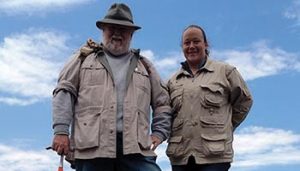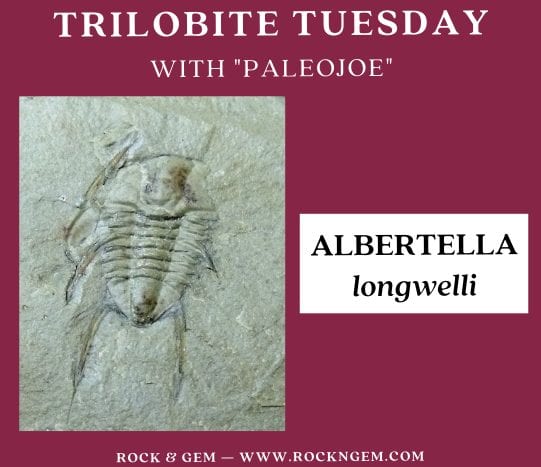By Joseph “PaleoJoe” Kchodl
The Cambrian trilobite ALBERTELLA longwelli has a very small pygidium or tail section, but it ends with two very long, rearward-pointing spines.
It has a wide cephalon that ends in long, outwardly-pointing spines. The third thoracic segment is also ornamented with long spines.
ALBERTELLA longwelli is a very showy trilobite and is quite rare in the formation where it is found, the Carrera Formation in Pike County, Nevada.
DID YOU KNOW: Trilobites, an extinct form of arthropod related to insects, crabs, crayfish, and horseshoe crabs, are among the most prevalent invertebrates with hard body parts to appear during the Cambrian Period. These creatures are called trilobite due to the three distinct “lobes” running vertically through the body section.

About the columnist: Joseph “PaleoJoe” Kchodl is a paleontologist, educator, veteran, author, fossil dig organizer/guide, business owner, husband, father, and grandfather, and fossil fanatic. For decades, he’s spent hours in classrooms around the Midwestern United States and beyond, speaking to school children about fossils and fossil hunting. Visit his site to purchase fossils, contact PaleoJoe, visit www.paleojoe.com.
Plus, learn more about PaleoJoe and his daughter PaleoJen and their paleontology exploration partnership in an the article “Fueling a Passion for Paleontology“.

